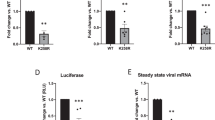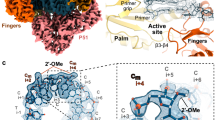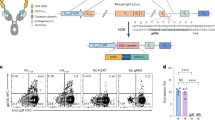Abstract
Aim:
To develop a novel high-throughput format assay to monitor the integrase (IN) strand transfer (ST) reaction in vitro and apply it to a reaction character study and the identification of antiviral drugs.
Methods:
The donor DNA duplex, with a sequence identical to the U5 end of HIV-1 long terminal repeats, is labeled at its 5′ end with biotin (BIO). The target DNA duplex is labeled at its 3′ end with digoxin (DIG). IN mediates the integration of donor DNA into target DNA and results in a 5′ BIO and 3′ DIG-labeled duplex DNA product. Streptavidin-coated magnetic beads were used to capture the product, and the amount of DIG was measured as the ST reaction product. The assay was optimized in 96-well microplate format for high-throughput screening purpose. Moreover, the assay was applied in a ST reaction character study, and the efficiency of the assay in the identification of antiviral compounds was tested.
Results:
The end-point values, measured as absorbance at 405 nm was approximately 1.5 for the IN-mediated ST reaction as compared with no more than 0.05 of background readings. The ST reaction character and the half maximal inhibitory concentration (IC50) values of 2 known IN inhibitors obtained in our assay were similar to previously reported results using other assays. The evaluation parameter Z′ factor for this assay ranged from 0.6 to 0.9.
Conclusion:
The assay presented here has been proven to be rapid, sensitive, and specific for the detection of IN ST activity, the reaction character study, as well as for the identification of antiviral drugs targeting IN.
Similar content being viewed by others
Article PDF
References
Craigie R . HIV integrase, a brief overview from chemistry to therapeutics. J Biol Chem 2001; 276: 213–16.
Chiu TK, Davies DR . Structure and function of HIV-1 integrase. Curr Top Med Chem 2004; 4: 965–77.
Pluymers W, De Clercq E, Debyser Z . HIV-1 integration as a target for antiretroviral therapy: a review. Curr Drug Targets Infect Disord 2001; 1: 133–49.
Marchand C, Neamati N, Pommier Y . In vitro human immunodeficiency virus type 1 integrase assays. Methods Enzymol 2001; 340: 624–33.
Chow SA . In vitro assays for activities of retroviral integrase. Methods 1997; 12: 306–17.
Hazuda DJ, Hastings JC, Wolfe AL, Emini EA . A novel assay for the DNA strand-transfer reaction of HIV-1 integrase. Nucleic Acids Res 1994; 22: 1121–22.
Hwang Y, Rhodes D, Bushman F . Rapid microtiter assays for provirus topoisomerase, mammalian type IB topoisomerase and HIV-1 integrase: application to inhibitor isolation. Nucleic Acids Res 2000; 28: 4884–92.
John S, Fletcher TM III, Jonsson CB . Development and application of a high-throughput screening assay for HIV-1 integrase enzyme activities. J Biomol Screen 2005; 10: 606–14.
David CA, Middleton T, Montgomery D, Lim HB, Kati W, Molla A, et al. Microarray compounds screening (microARCS) to identify inhibitors of HIV integrase. J Biomol Screen 2002; 7: 259–66.
Wang Y, Klock H, Yin H, Wolff K, Bieza K, Niswonger K, et al. Homogeneous high-throughput screening assays for HIV-1 integrase 3′-processing and strand transfer activities. J Biomol Screen 2005; 10: 456–62.
Hazuda DJ, Felock PJ, Witmer M, Wolfe A, Stillmock K, Grobler JA, et al. Inhibitors of strand transfer that prevent integration and inhibit HIV-1 replication in cells. Science 2000; 287: 646–50.
Farnet CM, Wang B, Lipford JR, Bushman FD . Differential inhibition of HIV-1 preintegration complexes and purified integrase by small molecules. Proc Natl Acad Sci USA 1996; 93: 9742–7.
He HQ, Ma XH, Liu B, Zhang XY, Chen WZ, Wang CX, et al. High-throughput real-time assay based on molecular beacons for HIV-1 integrase 3′-processing reaction. Acta Pharmacol Sin 2007; 28: 811–7.
Smolov M, Gottikh M, Tashlitskii V, Korolev S, Demidyuk L . Kinetic study of the HIV-1 DNA 3′-end processing single-turnover property of integrase. FEBS J 2006; 273: 1137–51.
Zhang JH, Chung TD, Oldenburg KR . A simple statistical parameter for use in evaluation and validation of high throughput screening assays. J Biomol Screen 1999; 4: 67–73.
Leh H, Brodin P, Bischerour J, Deprez E, Tauc P, Brochoon JC, et al. Determinants of Mg2+-dependent activities of recombinant human immunodeficiency virus type 1 integrase. Biochemistry 2000; 39: 9285–94.
Hindmarsh P, Lei J . Retroviral DNA integration. Microbiol Mol Biol Rev 1999; 63: 836–43.
Sherman MP, Greene WC . Slipping through the door: HIV entry into the nucleus. Microbes Infect 2002; 4: 67–73.
Andrake MD, Skalka AM . Retroviral integrase, putting the pieces together. J Biol Chem 1996; 271: 19 633–6.
Tramontano E, Onidi L, Esposito F, Badas R, Colla PL . The use of a new in vitro reaction substrate reproducing both U3 and U5 regions of the HIV-1 3′-ends increases the correlation between the in vitro and in vivo effects of the HIV-1 integrase inhibitors. Biochem Phar 2004; 67: 1751–61.
Debyser Z, Cherepanov P, Pluymers W, De Clercq E . Assays for the evaluation of HIV-1 integrase inhibitors. Methods Mol Biol 2001; 160: 139–55.
Lee SP, Kim HG, Censullo ML, Han MK . Characterization of magnesium-dependent 3′-processing activity for human immunodeficiency virus type 1 integrase in vitro: real-time kinetic studies using fluorescence resonance energy transfer. Biochemistry 1995; 34: 10 205–14.
Engelman A, Craigie R . Efficient magnesium dependent human immunodeficiency virus type 1 integrase activity. J Virol 1995; 69: 5908–11.
Miller M, Bor YC, Bushman FD . Target DNA capture by HIV-1 integration complexes. Curr Biol 1995; 5: 1047–56.
Vink C, Lutzke RAP, Plasterk RHA . Formation of a stable complex between the human immunodeficiency virus integrase protein and viral DNA. Nucleic Acids Res 1994; 22: 4103–10.
Agapkina J, Smolov M, Barbe S, Zubin E, Zatsepin T, Deprez E, et al. Probing of HIV-1 integrase/DNA interactions using novel analogs of viral DNA. J Biol Chem 2006; 281: 11 530–40.
Yi J, Asante-Appiah E, Skalka AM . Divalent cations stimulate preferential recognition of a viral DNA end by HIV-1 integrase. Biochemistry 1999; 38: 8458–68.
Esposito D, Craigie R . Sequence specificity of viral end DNA binding by HIV-1 integrase reveals critical regions for protein/DNA interaction. EMBO J 1998; 17: 5832–43.
Diamond TL, Bushman FD . Role of metal ions in catalysis by HIV integrase analyzed using a quantitative PCR disintegration assay. Nucleic Acids Res 2006; 34: 6116–25.
Grobler JA, Stillmock K, Hu B, Witmer M, Felock P, Espeseth AS, et al. Diketo acid inhibitor mechanism and HIV-1 integrase: implications for metal binding in the active site of phosphotransferase enzymes. Proc Natl Acad Sci USA 2002; 99: 6661–6.
Author information
Authors and Affiliations
Corresponding authors
Additional information
Project supported by the National Natural Science Foundation of China (No 30500429 and 30670497) and the Beijing Natural Science Foundation (No 5072002).
Rights and permissions
About this article
Cite this article
He, Hq., Ma, Xh., Liu, B. et al. A novel high-throughput format assay for HIV-1 integrase strand transfer reaction using magnetic beads. Acta Pharmacol Sin 29, 397–404 (2008). https://doi.org/10.1111/j.1745-7254.2008.00748.x
Received:
Accepted:
Issue Date:
DOI: https://doi.org/10.1111/j.1745-7254.2008.00748.x
Keywords
This article is cited by
-
A novel assay for screening inhibitors targeting HIV-1 integrase dimerization based on Ni-NTA magnetic agarose beads
Scientific Reports (2016)
-
Development of a high-throughput assay for the HIV-1 integrase disintegration reaction
Science China Life Sciences (2010)
-
Comparison of metal-dependent catalysis by HIV-1 and ASV integrase proteins using a new and rapid, moderate throughput assay for joining activity in solution
AIDS Research and Therapy (2009)
-
Discovery of potent inhibitors for phosphodiesterase 5 by virtual screening and pharmacophore analysis
Acta Pharmacologica Sinica (2009)



